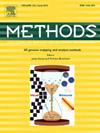Gluconeogenesis unraveled: A proteomic Odyssey with machine learning
IF 4.2
3区 生物学
Q1 BIOCHEMICAL RESEARCH METHODS
引用次数: 0
Abstract
The metabolic pathway known as gluconeogenesis, which produces glucose from non-carbohydrate substrates, is essential for maintaining balanced blood sugar levels while fasting. It's extremely important to anticipate gluconeogenesis rates accurately to recognize metabolic disorders and create efficient treatment strategies. The implementation of deep learning and machine learning methods to forecast complex biological processes has been gaining popularity in recent years. The recognition of both the regulation of the pathway and possible therapeutic applications of proteins depends on accurate identification associated with their gluconeogenesis patterns. This article analyzes the uses of machine learning and deep learning models, to predict gluconeogenesis efficiency. The study also discusses the challenges that come with restricted data availability and model interpretability, as well as possible applications in personalized healthcare, metabolic disease treatment, and the discovery of drugs. The predictor utilizes statistics moments on the structures of gluconeogenesis and their enzymes, while Random Forest is utilized as a classifier to ensure the accuracy of this model in identifying the best outcomes. The method was validated utilizing the independent test, self-consistency, 10k fold cross-validations, and jackknife test which achieved 92.33 %, 91.87%, 87.88%, and 87.02%. An accurate prediction of gluconeogenesis has significant implications for understanding metabolic disorders and developing targeted therapies. This study contributes to the rising field of predictive biology by mixing algorithms for deep learning, and machine learning, with metabolic pathways.
揭开糖元生成的神秘面纱:利用机器学习的蛋白质组奥德赛。
糖元生成是从非碳水化合物底物中产生葡萄糖的代谢途径,对于空腹时维持血糖平衡至关重要。准确预测葡萄糖生成率对于识别代谢紊乱和制定高效的治疗策略极为重要。近年来,采用深度学习和机器学习方法来预测复杂的生物过程越来越受欢迎。识别蛋白质的通路调控和可能的治疗应用都取决于与其糖元生成模式相关的准确识别。本文分析了机器学习和深度学习模型在预测葡萄糖生成效率方面的应用。研究还讨论了受限数据可用性和模型可解释性带来的挑战,以及在个性化医疗保健、代谢疾病治疗和药物发现方面的可能应用。该预测方法利用了葡萄糖生成结构及其酶的统计时刻,并使用随机森林作为分类器,以确保该模型在识别最佳结果方面的准确性。该方法通过独立测试、自一致性、10 k 倍交叉验证和千分比测试进行了验证,结果分别为 92.33 %、91.87 %、87.88 % 和 87.02 %。准确预测葡萄糖生成对了解代谢紊乱和开发靶向疗法具有重要意义。这项研究通过将深度学习和机器学习算法与代谢途径相结合,为正在崛起的预测生物学领域做出了贡献。
本文章由计算机程序翻译,如有差异,请以英文原文为准。
求助全文
约1分钟内获得全文
求助全文
来源期刊

Methods
生物-生化研究方法
CiteScore
9.80
自引率
2.10%
发文量
222
审稿时长
11.3 weeks
期刊介绍:
Methods focuses on rapidly developing techniques in the experimental biological and medical sciences.
Each topical issue, organized by a guest editor who is an expert in the area covered, consists solely of invited quality articles by specialist authors, many of them reviews. Issues are devoted to specific technical approaches with emphasis on clear detailed descriptions of protocols that allow them to be reproduced easily. The background information provided enables researchers to understand the principles underlying the methods; other helpful sections include comparisons of alternative methods giving the advantages and disadvantages of particular methods, guidance on avoiding potential pitfalls, and suggestions for troubleshooting.
 求助内容:
求助内容: 应助结果提醒方式:
应助结果提醒方式:


